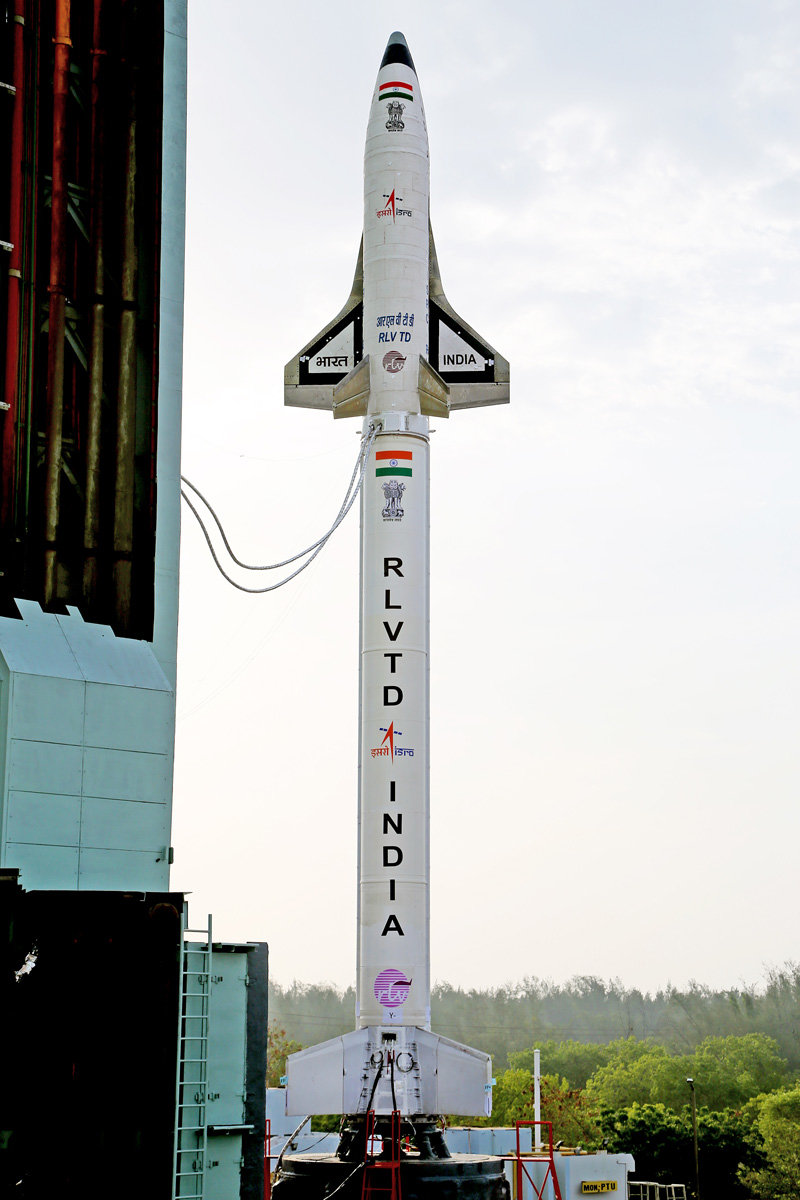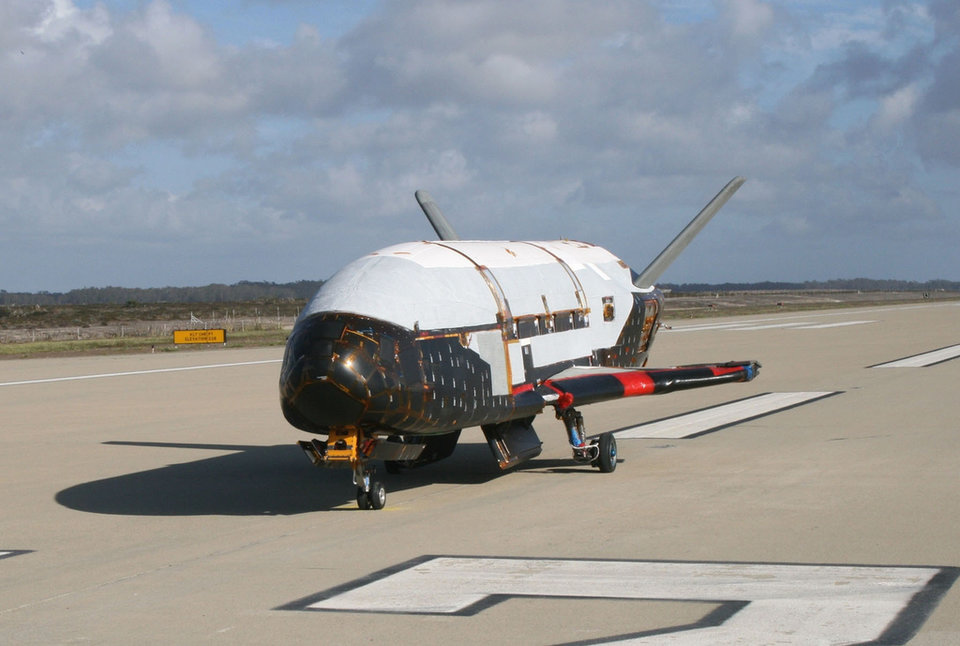sPACE
Space planes: sci-fi or future threat?
Over the past decade, the US has launched several flights of its X-37B space plane, while China joined the race by launching a secretive space plane, and Russia is reportedly working on its own. Alex Love explores the growing interest in space planes by defence departments.
Space planes could have a place in the future of defence as governments around the world seek to develop counter space capabilities. Launched vertically on a rocket and landing like an aeroplane on a runway, the reusable uncrewed spacecraft potentially offers a more cost-effective means of conducting space missions, compared to current methods.
A common thread in ongoing space plane activities is that everything seems shrouded in secrecy. Despite most nations involved claiming that the technology is for scientific purposes and denying the presence of any weapons onboard, the real intent behind the R&D efforts is not always clear.
“We don't necessarily know what it’s doing. What is it capable of doing? Are they interfering? Are they intercepting? Those are, for me, the most concerning areas of development,” says Alexandra Stickings, research fellow for space policy and security as part of RUSI’s military sciences division.
Space planes in development
The US has led the field of modern space planes since launching its X-37B in 2011. A variant of NASA’s X-37, it is operated by the US Air Force. The USAF vehicle has been deployed on six space missions to date, with most carrying payloads into orbit. The latest mission launched in May 2020 and is ongoing. Mission five lasted for 779 days, but it is likely that the current operation will surpass this as the time spent in orbit has increased with each mission.
China is also known to be developing a space plane. In September 2020, the country announced it had completed tests of a reusable spacecraft. It is widely understood that this was a space plane, although there has been no official confirmation of the type of vehicle.
In addition, India reported successful tests of its RLV-TD space plane in 2016 and has scheduled further trials for this year.
Meanwhile, Russia revealed it was developing its equivalent of the X-37B in 2011, although more recent details are harder to find. Yet this doesn’t mean that development has stopped, as the country is known to be advancing with a range of space defence capabilities.

// Image: India’s RLV-TD completed flight trials in 2016, with a follow-up due in 2021.
Plausible deniability
As the majority of space plane missions take place in orbit, they are just far enough out of sight to make other nations suspicious about what is going on. Spying is one of the main concerns, as well as what exactly a plane is carrying onboard.
Last year, Russia was accused of manoeuvring one of its spacecraft in orbit to within close proximity to a key US spy satellite. However, the Kremlin has denied any wrongdoing in the past with such activities and claims its ‘inspector’ assets are merely carrying out experiments. Yet, a space plane would also be capable of this alleged shadowing behaviour.
“One thing that we've seen become much more of a concern in recent years is what we call rendezvous and proximity operations: satellites which can manoeuvre in orbit and approach other satellites,” says Stickings.
“So I suppose they would be concerned that a space plane could do something similar. Some of those conversations are about moving towards; what is a minimum distance? How close can you get to me before I can feel like I'm in my rights to feel threatened? And what it could mean?”
One of the difficulties in space is that it's very hard to attribute something to an actor.
A lack of conclusive proof of activities in space may also appeal to some states. And the numerous factors in space that could damage an asset may provide helpful cover for more hostile intentions.
“One of the difficulties in space is that it's very hard to attribute something to an actor,” says Stickings. “If your satellite stops working, you may never know what actually happened. Was it a debris strike? Is it radiation? Is it just some kind of fault?
“You add a space plane that's orbiting in an already crowded and contested environment, you don't know what it's doing. Because we're aware that they have a cavity, within which they have a number of different payloads.
“It's that uncertainty, I think, that people are often more concerned about. You know what an anti-satellite missile is, you know what it does. You don't like it, but you understand it; whereas these are so much more mysterious.”

// Image: The US Air Force’s X-37B is a variant of NASA’s X-37. Credit: US Air Force
Operational flexibility
Space planes are designed to stay in orbit for prolonged periods, with the X-37B operating for more than two years before returning to Earth. The X-37B is also relatively small at 8.8m in length, with a height of 2.9m and a 4.6m wingspan. In comparison, NASA’s Space Shuttle orbiters were approximately 37m long, 18m tall, and had wingspans of 24m.
These attributes, combined with the capacity to carry diverse payloads, open up multiple opportunities for experiments and missions in space.
“You could have something up in orbit for a while, either doing observations or collecting data on other space vehicles, or just generally monitoring the situation,” explains Dr Malcolm Claus, senior lecturer in astronautics and space technology at Kingston University. “The good thing about having a system like that is obviously you can get it back; you can also get information from it if it's sent directly to a ground station.
“You can also use this mini system as a test vehicle; to test either, say, materials or re-entry, you could use it for general systems testing. So from that point of view, they can be quite useful.”
In addition, space planes could be used to fill gaps in intelligence, surveillance and reconnaissance (ISR) coverage.
"If you have a satellite constellation, it's providing some of these ISR capabilities,” says Stickings.
“But you might not have persistence over a certain geographical area. So a space plane could maybe just plug some of those gaps.”
Future threats
Space planes are not currently considered to pose a direct hostile threat, despite their potential, but it is not entirely possible to predict what the role of the space plane will be in future.
“I do think there's always going to be a narrative that sees these as being weapons in some way or offensive2,” adds Stickings. “Whereas from what I've seen, it seems more about ISR capability rather than offensive weapons. That’s not to say they couldn't be used for that, of cours; the capability is there. It's just whether anyone would want to go down that route.”
Claus shares a similar view, even if the long-term picture is more difficult to determine. “There's been no indication that any of these systems will carry, say, a military payload apart from sensors and that sort of thing,” he says. “But again, thinking about getting gaining experience with these vehicles, their role could change.”
No one really knows what an act of aggression will look like in space.
In addition, if an attack on space assets in orbit could be proven, it is unclear what form a response would take.
“No one really knows what an act of aggression will look like in space,” says Stickings. “Where is that line? No one really knows what a response would look like. Is it a response in space? Is it a response in another domain? And what's the proportionality of it?
The push for new space capabilities in recent years has led to discussions through the United Nations to define what is acceptable behaviour and responsible activity in a changing space environment.
In 2019, the US Space Force was established by former US President Donald Trump. He described space as “the new war-fighting domain” and vowed to achieve US domination of the area. However, the new Biden administration is expected to take a less confrontational approach. Speculation indicates Biden will push a space policy based on science rather than military dominance.
Where space planes fit in this strategy, and what roles they will carry out, remains to be seen.
// Main image: An X-37B Orbital Test Vehicle is launched into low Earth orbit at Cape Canaveral. Credit: United Launch Alliance.